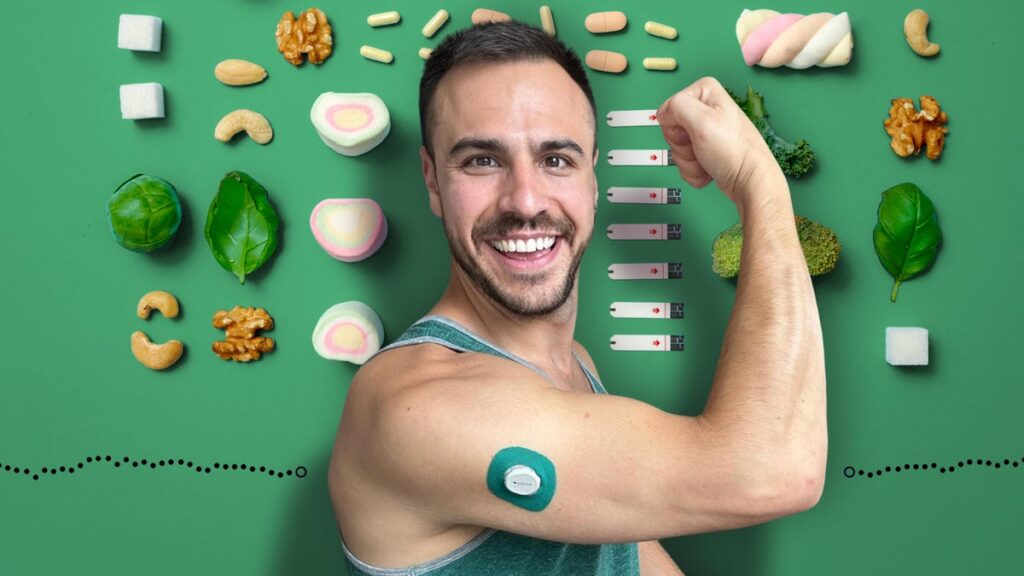Three years ago, my doctor diagnosed me with type 2 diabetes after a blood test showed I had a high A1C. He wrote me a prescription for metformin and sent me on my way without any explanation or instructions. I left the office feeling alone, scared, and confused.
After six months of taking the prescribed medication, I was feeling sick all the time and had lost 20 pounds. I found a new doctor and was told to test my glucose, or blood sugar, several times a day. I was already a tech YouTuber reviewing gadgets on social media, so naturally, I decided to start documenting this on TikTok. I posted videos where I talk about my diagnosis, measuring my blood sugar with a glucose meter, and the results.
These videos started to be inundated with comments encouraging me to get tested for Type 1 Diabetes and that my diabetes should be treated with insulin. I was told to get a C-peptide test to check for autoantibodies and get a correct diagnosis, so I went to get tested.
TikTok was right
The results were positive for adult-onset diabetes mellitus, also known as latent autoimmune disease in adults (LADA), also known as type 1.5 diabetes. It's a chronic disease that's managed similarly to type 1 diabetes. Apparently, 60% of people diagnosed with type 1 diabetes are over the age of 20, yet awareness is very low. In fact, the Centers for Disease Control and Prevention estimates that of the more than 38 million Americans with diabetes, 8.7 million are undiagnosed.
As I learned more about diabetes and the technology used to manage it, I made more videos. Every time I met with an endocrinologist or diabetes educator, I would take to TikTok to share what I was learning with people. And thus began my channel, Diabetech, where I show people how to manage diabetes and the technology that helps them live a better life. Two years later, this hobby has become a full-time job, where I post weekly videos to YouTube, TikTok, Instagram, and also have a podcast.
Here are two devices that I wear and use that I want you to know about.
Continuous glucose monitor
Soon after my diagnosis, I started wearing a continuous glucose monitor. This wearable device measures my blood glucose levels every five minutes and sends the information to my smartphone. The continuous glucose monitor is about the size of two pennies stacked together and is attached to the skin using an applicator. The applicator inserts a sensor about 1-2 inches long and about the thickness of three hairs under the skin.

CGM worn on the author's arm.
Wearing a CGM has made life with diabetes much more manageable for several reasons: The sensor alerts me when my blood sugar levels are high (hyperglycemia) or low (hypoglycemia). Preventing hypoglycemia before it happens can be life-saving; if left untreated, it can lead to passing out or, in extreme cases, a diabetic coma. These alerts helped me avoid some scary situations, and I'm grateful I was diagnosed when it was possible.

Screenshot of blood glucose readings from the Dexcom G7 CGM iPhone app.
Real-time blood glucose monitoring data sent to my phone helps me understand how the food I ate and the amount of insulin I took affected me. If I notice that my blood sugar is high after a meal, I may not have taken enough insulin to cover the meal and can change my approach the next time I eat the same thing.
Perhaps the most powerful aspect of CGM measurement is its use in conjunction with an insulin pump to automate insulin dosing.
Insulin pumps
Insulin pumps deliver insulin throughout the day to help diabetics maintain target blood glucose levels. A common misconception is that diabetics who use pumps are “taking care of everything,” but this is not true. Today's automated insulin pumps take much of the burden of diabetes away from the user, but pumps still require attention and interaction from the user.
There are two types of insulin pumps on the market: tubed and tubeless. Tubed pumps are as small as a pager or phone and have a tube that connects the device to the user's injection site. I use a tubeless pump called the Omnipod, a disposable wearable pump that is attached to the body to store and deliver insulin every three days.
As an active person, I love the mobility of this device, as all pumps have injection sites approved for a variety of locations, including the abdomen, arms, and buttocks.

Insulin pumps, like the tubeless Omnipod pump shown here, can help regulate insulin release in conjunction with a CGM.
CGM gives insulin pumps the information they need to automate insulin dosing based on blood glucose trajectory. When a diabetic eats, they need to tell the pump how many carbohydrates the meal contains and deliver a “pre-bolus” of insulin about 10-15 minutes before the meal. Without these two steps, users can have a hard time managing ideal blood glucose levels.
Ultimately, the hope is that manufacturers will develop a true “artificial pancreas” — a pump that can keep blood glucose levels within a target range without any interaction from the user. The industry is making great strides in meal-detection technology, and an open-source community known as #WeAreNotWaiting is experimenting with dynamically configurable algorithms that require little to no interaction from the user.
Learn the basics of diabetes technology
There are still many people who struggle to manage their diabetes or who have undiagnosed diabetes, so learning about these life-saving techniques will enable you to better support yourself and your loved ones.


